Here at Ultrabookreview.com, we’ve been testing and reviewing thin-and-light gaming laptops for more than 15 years now, of all kinds and from all major brands. Our experience allows us to help you choose the best portable gaming laptop (or gaming ultrabook) for your needs and within your budget, from the multitude of options available in stores as of the second part of 2025.
Table of Contents
- The Best portable 13-inch gaming laptops and ultrabooks
- The best 14-inch gaming laptops – lightweight and well-balanced
- Asus ROG Zephyrus G14 – the sweet spot
- Razer Blade 14 – powerful 14-inch laptop
- HP Omen Transcend 14, Acer Predator Triton 14, MSI PrestigePro 14 – premium all-rounders
- More affordable options: Asus TUF Gaming A14, Acer Nitro V 14, Lenovo Legion Slim 5 14
- Older-gen options – Acer Swift 14X, Predator Triton 14, Asus ZenBook Pro and VivoBook Pro 14X
- The best 15/16-inch thin-and-light gaming laptops
- Premium lightweight options: Dell XPS (Premium), Lenovo ThinkPad P1, MacBook Pro
- Asus ROG Zephyrus G16/M16, ProArt P16 and ROG Flow X16 lineups
- Razer Blade 16
- MSI Stealth A16 AI+ and Stealth 16 Studio
- Mid-specced portable options: Lenovo Legion 7i, Gigabyte Aero X16, Acer Predator Triton Neo 16, HP Omen Transcend 16
- 17-inch and 18-inch portable gaming laptops
- Conclusions on the best available portable gaming laptops
We take a multitude of aspects into consideration for our recommendations. The performance, thermals, and noise levels while running games and other demanding applications come first, but other details count as well, such as the overall build quality and ergonomics of each design, the screen and audio quality, the typing experience, and especially if there are any potential deal-breaking flaws that you must be aware of with each model. On top of these, pricing plays an important role as well in determining a notebook’s overall worth.
Even when accounting for all these, you’ll find that there are many good-value gaming laptops out there, and that’s why this article is not just a basic Top 10 as you’ll find on most other sites, but a detailed buying guide. Take your time and go through the entire article, it will help you narrow down your options and make a purchase you won’t regret. There’s also a comments section at the end where you can get in touch with me if you have any questions or need further assistance.
I’ve split the article into a few different sections, in order to make it easier for you to navigate:
- 13-inch gaming ultrabooks – the most compact and lightest options;
- 14-inch portbale gaming notebooks – the sweet spot balance of performance and portability ;
- the best 15 and 16-inch slim and lightweight gaming options – not as compact, but still portable and more powerful, as well as potentially more affordable;
- the best 17 and 18-inch lightweight options – with larger screens and improved performance, but still fairly light and portable.
The Best portable 13-inch gaming laptops and ultrabooks
These days, your best options in the 13-inch segment are a few powerful models in the Asus ROG Flow and Asus ProArt lineups, all offering Nvidia dGPUs, alongside very few other options that rely on the latest-gen and still fairly capable iGPUs from AMD/Intel. Not much else in this class, but the offer is far more generous in the 14-inch segment of performance and gaming laptops, which we’re discussing further down in the article.
Asus ROG Flow Z13, ProArt PX13, ROG Flow X13- most powerful 13-inch gaming computers
These two ROG Flow models and the ProArt PX13 are the most powerful 13-inch computers available today, suitable for multitasking and sustained work/gaming loads.
The ROG Flow X13 is a convertible 2-in-1 laptop built on previous-gen AMD Ryzen 9 HS hardware with up to RTX 4070 graphics (60W TGP), up to 32 GB of LPDDR5 memory, a 75 WH battery and a 13.4-inch IPS QHD+ 165 Hz 3ms display. This is an all-metal all-black design with good ergonomics, inputs and IO, and it weighs 1.3 kg (2.9 lbs). It comes with a 130W USB-C charger.
You’ll find all about it in our detailed reviews, the latest being over here: Flow X13 review. And here’s a picture of this X13 hooked-up to the ROG XG Mobile external dGPU, which is compatible with all the pre-2025 Flow models.
The ProArt PX13 (reviewed here) is a more recent iteration of a similar all-metal all-black 2-in-1 chassis, a little thicker and heavier (1.4 kg, 3.05 lbs) than the Flow X13, but also significantly more powerful and better cooled.
This is built on an AMD Strix Point Ryzen AI 9 HX 370 platform with up to 32 GB of faster LPDDR5x memory, up to an RTX 4070 dGPU (75W TGP), and a 73 Wh battery. This also bundles an OLED 13.4-inch 60Hz touch-display, instead of the IPS on the Flow X13, which is a solid option for daily, multimedia, and creator use, but not necessarily ideal for gaming with only 60Hz refresh rate.
Furthermore, due to the more powerful settings, the PX13 comes with a larger 200W charger and not the 130W USB-C model offered with the Flow X13. But it works very well on a 100W PD charger too. This series is also more expensive and not as widely available across markets.
Then there’s the ROG Flow Z13 lineup, available in either a 2023/2024 generation or in a completely revamped 2025 model. Both are tablet formats with a kickstand on the back and a detachable keyboard folio. Both are all-metal solid constructions with decent ergonomics and IO.
The gen1 Flow Z13 (2023/2024) is built on an Intel Core i9-13900H platform with up to RTX 4070 graphics (65W TGP), up to 32 GB of LPDDR5 memory, a 56 WH battery and a 13.4-inch IPS QHD+ 165 Hz 3ms display. This is comparable in capabilities to the Flow X13, but a little faster and better cooled due to the tablet format and the more advanced thermal module with a vapor-chamber.
This is also bundled with a 130W USB-C charger, and is still widely available today. However, you’ll mostly find this Z13 generation in stores in the RTX 4060 version with only 16 GB of RAM.
You’ll find all about it in our detailed reviews, the latest being over here: Flow Z13 review.
The gen2 2025 ROG Flow Z13 is a similar tablet + folio format, once more a little thicker and heavier than the gen1 model, as shown in this comparison article.
However, this series is quite unique as one of the very few built entirely on the AMD Strix Halo platform with Ryzen AI Max APUs that combine a powerful 16Core processor with the most capable Radeon iGPU available to date, alongside up to 128 GB of fast LPDDR5x memory. Now, the realistic graphics performance of this platform is somewhere in between the low-powered 4060 and 4070 included in the other 13-inch models offered by Asus, but what really sets this apart for potential work applications and AI loads is the AMD platform’s architecture and the possibility to get this with 64 or 128 GB of RAM (in some markets) and then allocate up to 96 GB of this memory to the GPU.
At the same time, keep in mind this Flow Z13 generation is quite a lot more expensive than the other models discussed here, and comes with a chunky 200W charger.
You’ll find more about this 2025 AMD Strix Halo generation of the Flow Z13 in our detailed review.
All these being said, while the ProArt PX13 and the gen2 Flow Z13 are refined iterations of the original Flow models with generally faster performance and better cooling, the original Flow models might still be the smarter buy for most of you looking for good performance and capabilities in these formats, especially with the current discounted prices. Follow these links for the latest configurations and prices:
- ROG Flow X13 (2-in-1 convertible format, AMD Ryzen 9 7940HS + up to RTX 4070 60W)
- ProArt PX13 (2-in-1 convertible format, AMD Ryzen AI 9 HX 370 + up to RTX 4070 95W)
- ROG Flow Z13, gen1 (tablet + folio format, Intel Core i9-13900H + up to RTX 4070 65W)
- ROG Flow Z13, gen2 (tablet + folio format, up to AMD Ryzen AI Max 395+)
Ultrabooks with integrated graphics
The general graphics performance of recent iGPUs in games and media applications has increased over the years, and the latest iGPUs from Intel (Arc 140v, 140T) and AMD (Radeon 780M, 880M, 890M and especially the Radeon chips integrated with Strix Halo hardware) might offer enough for your needs.
Still, that mostly means a decent gaming experience at 1080p/1200p resolution with low to medium settings, and mostly in lighter casual games (Minecraft or Fortnite or Dota2 or the likes) or older titles. If you plan on running AAA modern games on your device, you’ll just have to go with a dGPU or a Strix Halo platform instead. But those are only available in larger 14+ inches chassis designs for now.
On the other hand, there are plenty of options with modern iGPUs ranging up from handheld gaming consoles and micro-computers up to 13-17 inch ultraportables. They’re not all equal, as even iGPU performance varies between implementations based on the power settings and cooling capabilities of each model, but they offer mostly similar capabilities within each platform’s limits.
However, when it comes to 13-inch ultrabooks specifically, there are very few options still available with modern specs, such as the Dell 13 Premium and the MSI Prestige 13 built on Intel Core Ultra hardware with Arc graphics, as most OEMs migrated their thin-and-light models towards the 14-inch format as well. We’re discussing ultrabooks indepth in this separate guide.
The best 14-inch gaming laptops – lightweight and well-balanced
More and more excellent 14-inch gaming laptops are available these days, and these are the sweetspot of performance and portability available for most buyers.
With powerful processors and graphics, these can handle pretty much everything a full-size portable design would, but in a smaller and more compact chassis and with somewhat more limited power settings and performance. You just can’t beat physics. Furthermore, expect to pay a slight premium over a 15/16-inch model with similar capabilities for the better 14-inch performance models, and expect to accept higher internal temperatures.
I’d also note that since we’re interested in gaming performance, I’m only considering options built in x86 Intel, AMD, Nvidia hardware in this article, so none of the MacBooks and Arm-based Qualcomm Snapdragon Copilot+ models. For various obvious reasons. However, if you’re after a portable 14-incher for productivity and work applications, the latest Apple MacBooks and especially the MacBook Pro 14 M4 generation should be on your list.
Asus ROG Zephyrus G14 – the sweet spot
We’ve tested the Asus ROG Zephyrus G14 in multiple configurations over the years, and at this point you can still find several variants in stores, so I’ll quickly go over the particularities of each generation.
- Zephyrus G14 GA403 2025 – updated gen3 chassis, a little thicker and heavier in order to accommodate faster hardware and improved cooling, Ryzen AI 9 HX 370 and up to RTX 5080 110W;
- Zephyrus G14 GA403 2024 – gen3 chassis, more premium build and smaller/lighter format, OLED display, lower power hardware with AMD Ryzen 9 8945HS and up to RTX 4070 90W;
- Zephyrus G14 GA402 2023 – same gen2 chassis, with slightly updated IPS display, but with AMD Ryzen 9 7940HS and up to RTX 4090 125W graphics;
- Zephyrus G14 GA402 2022 – gen2 chassis with updated design, keyboard, 16:10 IPS display, AMD Advantage design with Ryzen 9 6900HS + AMD Radeon graphics;
- Zephyrus G14 GA401 2021/2020 – gen1 chassis, with 16:9 IPS display, Ryzen 9 4900/5000 HS+ RTX 2060/3060 specs.
Follow this link for updated Zephyrus G14 prices and configurations in your country.
Here’s the latest gen3 chassis, in gray and silver.
And here are the gen2 and gen1 designs side by side.
Each of these generations could make sense for some of you, but I’d mostly look into the 2023, 2024 and 2025 models at this point. You might not even find the older ones anymore, unless you’re ok shopping for an used model at bargain prices.
Nonetheless, Asus has refined these Zephyrus G14 designs over time, both functionally and aesthetically, even though their approach was kind of all over the place with the various model years.
For instance, the 2023 model focused on performance, with a powerful RTX implementation for a 14-inch laptop and the ability to spec up to a top-tier RTX 4090. Then, the 2024 gen3 chassis changed things, as a much more compact and lightweight chassis (1.5 kilos vs 1.7+ kilos on gen2 models), more premium construction and looks, and an OLED display. At the same time, this series is only available with mid-level specs running at lower power, so not as competent in sustained loads and games as the 2023 model.
Regardless, most people will be interested in the mid-specced variants on these Zephyrus G14s anyway, at around 1500 USD/EUR or maybe less. That generally gets you an R9 + 4060 in the pre-2025 models, and should get you a 5060 in the 2025 generation when available. Paired with the capable AMD CPUs, that’s still plenty for a daily driver that can tackle daily use, multitasking, work loads and games.
The latest 2025 Zephyrus G14 refines the gen3 2024 chassis, making it a little thicker and heavier in order to accommodate latest-gen hardware running at higher power. This generation offers a Ryzen AI 9 processor, one of the better all-around mobile platforms of this time, up to Nvidia’s latest GeForce RTX 5080 graphics chip and up to 64 GB of LPPDR5x onboard RAM.
Follow this link for updated Zephyrus G14 prices and configurations in your country.
Razer Blade 14 – powerful 14-inch laptop
The Blade 14 is one of the most powerful 14-inch gaming ultrabooks out there today. The latest generation is built on a Ryzen AI 9 365 processor with up to a full-power RTX 5070 Laptop dGPU (up to 140W). The previous model was built on a Ryzen 9 with RTX 4070 graphics.
Our full review of the 2024 Blade 14 is available over here and it’s an excellent compact laptop, pretty much a shrunk variation of the mainstream Blade 16 models, as you can tell from the picture down below. The build-quality and overall feel of this Blade remains second to none in this class, and the wide-gamut 240Hz IPS display is excellent for daily use, creator use and gaming.
I haven’t tested the 2025 Blade 14, but you cand find our review of the 2025 Blade 16 over here.
Anyway, while being so powerful, the Blade 14 is also much heavier than other 14-inchers, due to the sturdy metal chassis and vapor-chamber internal cooling. At 1.8 kg, this is about as heavy as some of the 16-inch options out there. That aside, its keyboard and speakers could use a refresh, and the series is quite expensive compared to similar options from other brands.
Follow this link for updated prices and configurations at the time you’re reading the article.
The Omen Transcend 14 and the newer PrestigePro 14 series from MSI are potential alternatives for the latest Asus Zephyrus G14 and Razer Blade 14 models, with a similar premium-chassis approach and mid-powered specs.
The Omen 14 is a little bigger and heavier than the G14, at 1.68 kg for the latest generations, offers an RGB keyboard and spreads ports on all sides, including behind the display. Speaking of, the display is an OLED 120hz panel and still only opens-up to around 140 degrees.
The specs are built on an Intel Core Ultra 9 H platform, with up to RTX 5070 graphics at 65W TGP, so not as powerful as the other options in this segment. But at least this allows HP to charge the laptop via a compact 140W USB-C brick. The battery is 71 Wh, so fine, and the audio is rather mediocre with only stereo speakers.
The Omen Transcend 14 is quite pricey in the latest variant, though, starting at $1800 for an RTX 5050 configuration, while he 5070 model goes for around $2350. Previous-gen configurations are much more affordable, though.
Follow this link for updated configurations and prices for the HP Omen Transcend 14 in your area.
The latest Acer Predator Triton 14 is a revamped chassis for 2025, but an unusual hardware configuration.
The chassis is all metal and premium and weighs 3.5 pounds, so a match for the Zephyrus G14. The keyboard and IO are well rounded, and the display is the same OLED 120Hz offered with the Omen or the Zephyrus.
But the specs are weird, as Acer decided to pair an Intel low-power Lunar Lake Core Ultra 9 288V processor with up to an RTX 5070 dGPU. Weird mix.
If you’re after something more powerful, but also much heavier and larger, the Predator Helios 14 might be worth your attention, this time built an Core Ultra 9 hardware and a higher power RTX 5000 GPU.
Follow this link for updated configurations and prices on these 14-inch Acer notebooks.
Finally, the MSI PrestigePro 14 is another weirdly-configured newly-launched series in 2025, a slightly thicker version of the standard Prestige 14 chassis with updated cooling, in order to accommodate a dGPU.
It’s built on a Core Ultra platform with RTX 4050 graphics, with a 90W battery and comes with a middling IPS display and weighs 3.7 lbs. Not as powerful as other options on the GPU side, but other configurations might be available later on. Look for an update once this is available in stores.
More affordable options: Asus TUF Gaming A14, Acer Nitro V 14, Lenovo Legion Slim 5 14
These are a handful of mid-sized mid-specced and well-priced laptops with 14-inch displays, available from a few different brands.
As far as specs go, these are available with mdi-level RTX 5000 and 4000 graphics and recent Intel/AMD hardware, with various power settings and various cooling modules, alongside either IPS (TUF A14, Nitro V 14) or OLED (Legion Slim 5) displays. Expect these to be updated with 2025 specs at some point in the second part of the year.
They come with different designs and particularities, but are mostly mid-tier chassis with part plastic and part metal elements. Some of them are more compact and lightweight, such as the Asus TUF A14 , while the Legion the Nitro are heavier. Keep in mind there’s a latest-gen Nitro V14 and a older Nitro 14 series, they’re quite different.
All these devices are worth considering. Some hardware refreshes might be available in the meantime, so make sure to check the links for the latest updates.
The Acer Nitro V 14 is a slimer and lighter variant of the standard Nitro 14, but still a mid-level product. It can be specced up to Ryzen AI 7 specs, 32 GB of RAM and RTX 5060 60W graphics, alongside a 76 Wh battery.
The Acer Nitro 14 is the previous chassis design, quite bulky and heavy and only available with a mid-quality IPS display and rather lacking speakers. It can be specced up to AMD Ryzen 7 specs, 32 GB of RAM and higher-power RTX 4060 110W graphics, alongside a 76 Wh battery.
The Lenovo Legion Slim 5 14 is mid-sized and nicer built, comes with an OLED 120Hz display, and similar Ryzen 7 + RTX 4060 105W specs. Hasn’t been updated to latest-gen hardware yet, and this would be more competitive once that update happens.
The Asus TUF Gaming A14 is the more affordable version of the Zephyrus G14. It’s the most lightweight option in this section at less than 1.5 kilos, as well as the one with the most up-to-date specs, as it is built on a Ryzen AI platform with up to RTX 5060 105W graphics, impressive settings considering the size of this chassis. On the other hand, this is only offered with a mid-level IPS display and dual speakers.
You’ll find more on each unit’s particularities from our reviews and via the links above.
Older-gen options – Acer Swift 14X, Predator Triton 14, Asus ZenBook Pro and VivoBook Pro 14X
These are a handful of other options you could still consider if shopping on a limited budget, as these are mostly 2023 launches that haven’t been updated with more recent specs in the meantime.
That means you’re not getting the latest hardware on these models, but they are still plenty capable for daily-multitasking and even work/gaming loads within reasonable expectations. And they can sell for competitive prices, if you can still find them in your area.
The previous Acer Predator Triton 14 and the Asus Zenbook Pro 14 and Duo 14 were premium-tier models in their days with solid construction and ergonomics and powerful specs, mostly Intel Core i9 H processors with RTX 4060/4070 graphics. The Triton 14 offers a miniLED display, while the Zenbooks offer OLED screens. And as the name suggests, the Zenbook Duo is a dual-display notebook.
We’ve reviewed these devices over the years. You’ll find more about the ZenBook Pro 14 OLED from this article, and here’s our detailed review of the ZenBook 14 Pro Duo. There’s a more recent Zenbook Duo design available in the meantime, but that’s something else and not a powerful as this 2023 Duo Pro generation.
The Acer Swift X 14 and VivoBook Pro 14X are mid-tier designs with more compact and lightweight constructions and lower-tier specs. They were available with Intel/AMD processors and up to RTX 3050Ti graphics, and might still be found at excellent prices around 500-700 USD/EURs.
Even at those prices levels, though, these are hard sells for gaming options compared to the more recent 4050/4060 configurations, but they are still competitive multi-use laptops.
Here’s our review of the Acer Swift X series and here’s the review of the Asus Vivobook Pro 14x model, this one offering better cooling, a superior 2.8K OLED 90H display, and a larger battery than the Acer Swift X.
These aside, we’re discussing other 14-inch laptops in this separate article, both ultraportable and all-around performance options, so check it out if interested in more options in this segment.
The best 15/16-inch thin-and-light gaming laptops
This section cherry-picks the best thin-and-light no-compromise notebooks for school, work, and gaming available with full-size 15+ inch displays.
The options here offer compact, thin, and premium builds at around 1.8 – 2.2 kilos or less, high-quality screens with proper brightness, colors, and refresh rates, good-quality RGB keyboards, as well as the latest available hardware specs and features. More importantly, these options are perfectly capable of delivering on the hardware’s performance potential in demanding workloads and AAA games.
At the same time, though, most of these premium options are expensive, and you should also expect them to run warm and/or noisy with games on the highest-power profiles – compromises you’ll just have to accept when looking for powerful hardware inside compact form factors.
I’ve only included the portable 15-inch and 16-inch gaming laptops in this selection, but this part of the guide also covers the larger 17-inch and 18-inch gaming ultraportables. And, if you’d rather get something more affordable or you’re willing to somewhat sacrifice on size and weight to some extent, the options in this section would most likely better fit your needs.
Let’s briefly touch on the available premium ultraportable performance laptops first, with an emphasis on premium and ultraportable, and less so on performance.
Unlike options such as the Razer Blade or the ROG Zephyrus models that we’ll discuss in a bit, the options in this subsection are compact and lightweight all-rounders meant for daily use, school, and work activities. They’re not primarily gaming laptops, although the mid-specced variants can still tackle most titles at mid-level resolutions and graphics settings, and some options are available with higher-level RTX graphics.
We’re not going to get in-depth on all these options here, instead, I’ll list them (alphabetically) with links to our available reviews and analysis:
- Apple Macbook Pro 16 – aluminum unibody construction, Apple M Pro/Max silicon, 16.2″ Liquid XDR miniLED screen, 99 Wh battery, starts at 2.15 kg / 4.7 lbs;
- Asus ProArt P16 – premium aluminum build, Ryzen AI 9 with RTX 5070 graphics, 16″4K OLED touch, 90 Wh battery, from 1.85 kg / 4.1 lbs;
- Dell Premium 16 (updated XPS 16) – premium aluminum build with weird keyboard, Core Ultra with RTX 5060, multiple screen and configuration options, 99.5 battery, from 2.2 kg / 4.4 lbs;
- Dell XPS 15 – older generation XPS, premium build with a more compact and more traditional design, still worth considering today;
- Lenovo ThinkPad P1 – classic ThinkPad design and build, Core Ultra and up to RTX 4070 graphics, multiple configuration options, IPS or OLED displays, 90 Wh battery, from 1.82 kg / 4 lbs;
- Lenovo Yoga Pro 9i – premium build and Yoga design, Core Ultra and up to RTX 4060 graphics, IPS or miniLED displays, 84 Wh battery, from 2.05 kg / 4.55 lbs;
- MSI PrestigePro 16 – premium lightweight build, Core Ultra and RTX 4050 graphics, OLED display, 99 Wh battery, from 1.6 kg /3.5 lbs;
- Samsung Galaxy Book4 Ultra (Book5 update) – premium lightweight build, Core Ultra and RTX 4070 graphics (updated Book5 with RT X5070 should be available soon), OLED 3K touch, 76 Wh battery, from 1.82 kg / 4 lbs.
Keep in mind that given the portable and slim form factor of these notebooks, the thermal design plays a crucial role in the way these perform with games and demanding loads, and I suggest carefully looking into detailed reviews to figure out what to expect from each of them.
Follow the links for our in-depth reviews and coverage, and get in touch in the comments section at the end if you have any questions.
Asus ROG Zephyrus G16/M16, ProArt P16 and ROG Flow X16 lineups
With those out of the way, let’s tackle the real gaming ultraportables.
We start with the Asus ROG models, as these are right now the best-balanced products in the niche, and we’ll discuss the other brands further down.
Asus offer the ROG Zephyrus G16 with latest-gen specs and features, as well as slightly older ROG Flow X16, ROG Zephyrus M16, and ROG Zephyrus G15 models in this class. Here’s a quick summary of all these models, with links to our detailed reviews for each of them:
- ROG Zephyrus G16 – compact clamshell design (4.1 lbs/ 1.85 kg), RGB keyboard, 16-inch OLED display, Core Ultra + RTX 5090 or AMD Ryzen AI + up to RTX 4070 specs with onboard RAM and 2x SSDs, dual-fan cooling with vapor-chamber on Intel models, 90 WH battery, 6x speakers.
- ProArt P16 – a cleaner looking and more portable variation of the Zephyrus, but available with a 4K OLED touchscreen and only mid-powered Ryzen AI + RTX 5070 hardware (for now);
- ROG Flow X16 – 2-in-1 convertible design (4.6 lbs/ 2.1 kg), RGB keyboard, 16-inch 16:10 QHD IPS or miniLED displays, Core i9 H + up to RTX 4070 120W with 2x DIMMs and 2x SSDs, tri-fan cooling, 90 WH battery, quad-speakers.
- ROG Zephyrus M16 – clamshell design (4.8 lbs/ 2.2 kg), RGB keyboard, 16-inch 16:10 QHD IPS or miniLED displays, Core i9 H + up to RTX 4090 145W with 2x DIMMs and 2x SSDs, tri-fan cooling, 90 WH battery, 6x speakers.
- ROG Zephyrus G15 – compact clamshell design (4.45 lbs/ 2.02 kg), RGB keyboard, 15.6-inch 16:9 FHD/QHD IPS displays, Ryzen 9 H + up to RTX 3070Ti 120W with with 1x DIMM (partially soldered memory) and 2x SSDs, dual-fan cooling, 90 WH battery, 6x speakers.
The Zephyrus G16 and the ProArt P16 are the latest additions to these lineups. They’re premium compact clamshell laptops available in a wide range of hardware variants, with an OLED display, punchy speakers and a 90W battery. The ProArt comes in a minimalist all-black design and a slimer and lighter format, while the Zephyrus is a little thicker and heavier, in order to handle the more powerful hardware and more advanced cooling.
For the Zephyrus G16, Asus actually offers two chassis variants of this laptop, one that’s a little heavier and thicker and reserved for the higher-specced models, and another that’s offered with the mid-specced configurations. For the 2025 generation, the RTX 5070Ti/5080/5090 configurations are the more advanced design with vapor-chamber cooling, and the 5060/5070 models are the more basic design. These are all Intel configuration for the 2025 model year. The AMD version hasn’t been refreshed and still tops at a 4070 configuration, with the more basic chassis design.
The ROG Flow X16 is a convertible 2-in-1 design with a touchscreen, but a slightly older chassis design that hasn’t been updated to the latest hardware specs. From what I can tell, this isn’t scheduled for update this year, but perhaps will be brought back to life at some point in the future.
It’s an all-black all-metal design with good inputs and IO, and available with either IPS or mini LED display options. It weighs 2.2 kilos, thus is heavier than all other clamshell models.
At this point, the Flow X16 tops out and an Intel Core i9 + RTX 4070 configuration, but I’d expect it should be updated with a gen2 chassis and latest hardware at some point in the near future.
The other two Zephyrus models are slightly older designs from a few years ago, with the Zephyrus M16 being the high-performance version with better specs, cooling and a mini LED display option, and the Zephyrus G15 being a mid-specced bud-get friendly version built on an older chassis with a 16:9 display. These are worth considering if found for the right price, a fair bit under similar configurations of the latest G16 chassis.
Razer Blade 16
The Blade 16 is a brand new chassis design for the 2025 model year, and a step-away from the previous-generation Blade 16 chassis.
It’s slimmer, thinner, more compact and more lightweight (2.1 kg, 4.6 lbs) than the previous Razer 16 generation, while still being a premium CNC aluminum build with iconic Razer design cues. It also implements an updated keyboard and updated audio with 6x speakers, both much needed refreshes for the Blade series. The display is still a 16-inch latest-gen OLED with QHD+ resolution and 240Hz refresh.
Internally, this Blade 16 is built on AMD Ryzen AI 9 hardware with Nvidia RTX 5000 graphics, alongside an updated cooling module with a larger vapor-chamber. That allows Razer to squeeze in up to a 155W RTX 5090 inside this thin chassis, and based on our tests (here’s our detailed review of the Blade 16), the performance and thermal capabilities of this refresh are unrivalled in the thin-and-light space. This is simply the most powerful such notebook available today.
Of course, all these don’t come cheap, with the Blade 16 demanding a slight premium over competitors such as the Zephyrus. Follow this link for updated configurations and prices at the time you’re reading the article.
MSI Stealth A16 AI+ and Stealth 16 Studio
These are the latest-generations of MSI’s Stealth series of performance thin-and-light laptops, in either AMD (Stealth A16 AI+) or Intel (Stealth 16 Studio) variants paired with up to 64 GB of RAM and various types of RTX graphics, starting from entry-level RTX 4050 chips and all the way up to RTX 5090s.
Specs aside, these laptops are premium all-metal chassis with excellent ergonomics, such as a full IO and 180-displays. They’re available in multiple screen options, with either IPS or OLED panels, with 6x speakers and comfortable keyboards with per-key RGB. They weigh around 2.1 kilos, and that’s despite packing 99 WH batteries inside.
On the other hand, these devices are only mid-power designs, with GPU TGPs of around 100-110W, and still tend to run hot and noisy in sustained loads. Make sure to look into detailed reviews for more details on the exact particularities of each configuration.
Mid-specced portable options: Lenovo Legion 7i, Gigabyte Aero X16, Acer Predator Triton Neo 16, HP Omen Transcend 16
These are fairly portable 16-inch designs with mid-level specs, especially on the GPU side, and mid-range power settings and cooling modules.
The Lenovo Legion 7i is an all-metal design and weighs around 2.25 kilos, so is a little heavier than other options, but is well built and functional. It’s built on latest gen Intel hardware and up to an RTX 5070 dGPU, alongside 2x SSD slots and a 99 Wh battery. It’s offered with IPS displays, either 2.5K or 3.2K resolution. Don’t confuse this with the Legion Pro 7i series, which is a larger chassis with more powerful hardware and OLED displays.
The Gigabyte Aero X16 is a very functional chassis as well, still all-metal and around 1.9 kilos in weight, despite offering excellent IO, a full keyboard with a NumPad, and a 76 Wh battery.
Specs wise, the Aero X16 is built on a Ryzen AI 9 platform with up to RTX 5070Ti graphics, with 2x RAM slots and 2x SSDs. It’s only available with a mid-tier IPS display and dual-speakers.
The Predator Triton Neo 16 is Acer’s offer in this segment, another all-metal chassis at around 2.05 kilos. This is an Intel configuration with mid-tier RTX graphics and onboard RAM, and hasn’t been yet updated to 2025 specs. Comes with an IPS screen, 76 Wh battery and dual-speakers.
The HP Omen 16 Transcend is a more more premium build and a heavier chassis, at around 2.3 kilos. It compensates for this with sturdy build quality, and OLED display, more powerful hardware with up to a RTX 4070 130W GPU inside, and a 97 Wh battery. It’s not that affordable, but it’s a fair value model in its class.
All in all, you’ll pretty much want to find these devices at competitive prices, in order to compensate for some of their lacks in comparison to the higher-tier devices mentioned earlier in the article.
17-inch and 18-inch portable gaming laptops
Most 17-inch and 18-inch laptops offer uncompromised specs and performance without much concern for portability, but there is a sub-lineup of lightweight 17-inch computers meant for those of you looking for the extra real estate offered by larger screens, but still in a mid-sized chassis that won’t break your back. We’re covering these options in a separate article, which includes popular options such as the Dell XPS 17, the Alienware X17, the MSI Stealth GS77, or the Asus Zephyrus S17, among others – just keep in mind these aren’t latest-gen designs, though.
Laptops with 18-inch displays will be discussed in a future update as well, once those are available in portable formats. For now, this article goes over the best gaming/work 18-inch laptops currently available in stores.
Conclusions on the best available portable gaming laptops
All in all, there are many good gaming notebooks in this list, of different sorts, and for different budgets.
As a buyer interested in a compact gaming computer today, you’ve got a wide array of options to choose from, starting with the highly portable 13-inch gaming ultrabooks, and up to the most powerful 17-inchers with uncompromised specs and features. Most of these are thin-and-light builds, while some favor performance over portability.
In the end, it’s up to you to choose the gaming laptop that best suits your requirements and budget, and find the right balance between power, portability, features, and price for you. I’m sure this article helped you in your quest, and we have further in the comments section if you have any questions or anything to add to this post. Get in touch and we’ll get back to you.


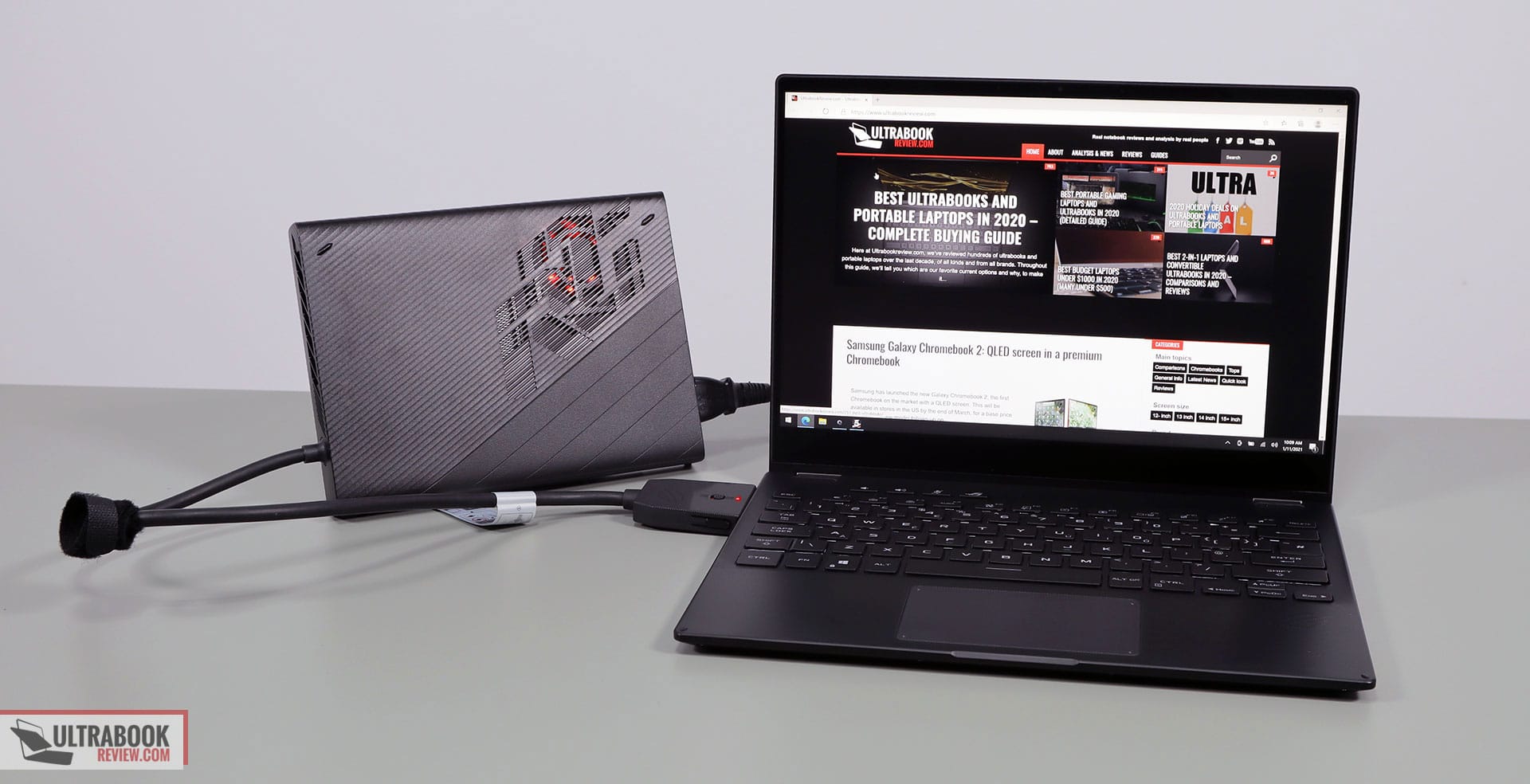
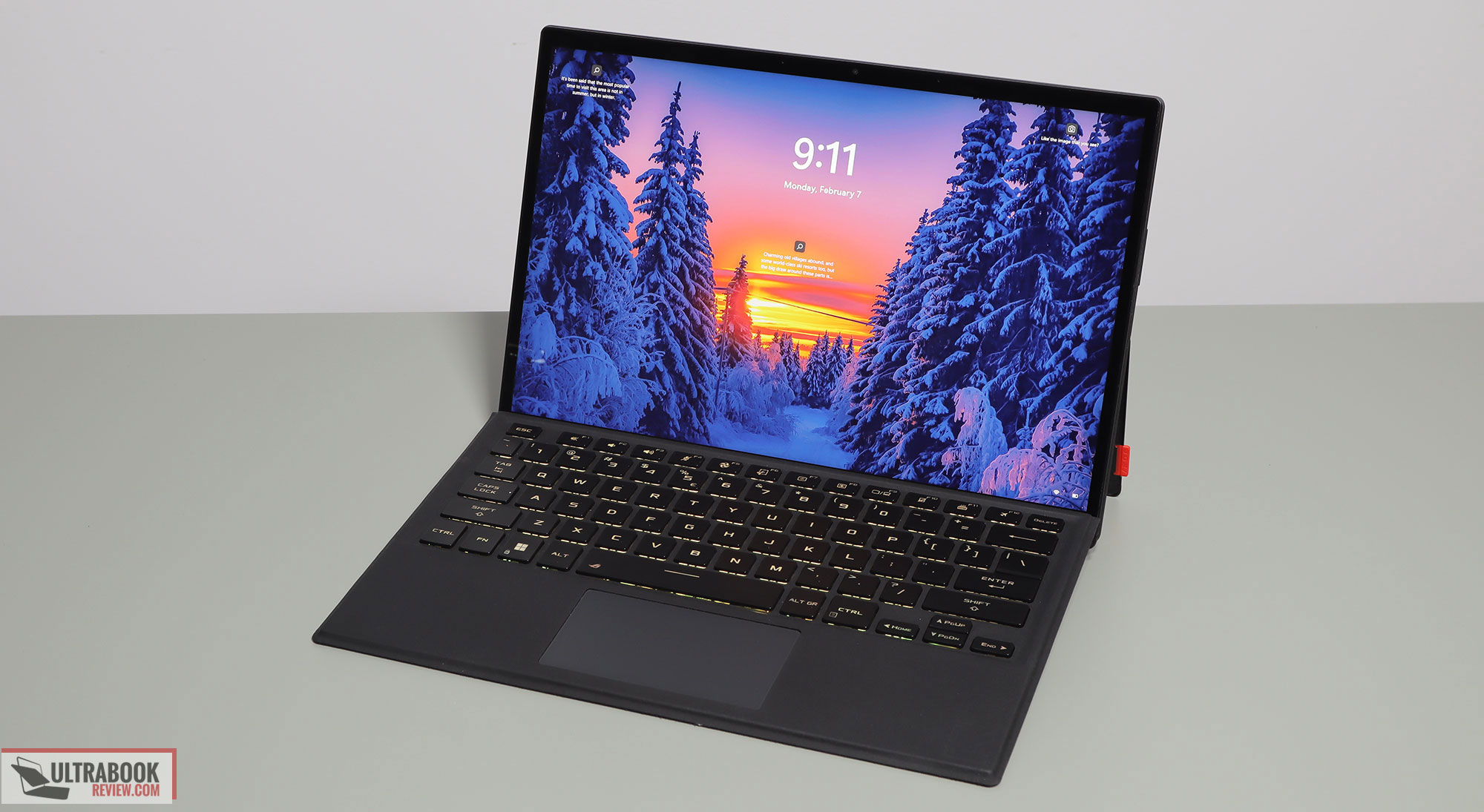
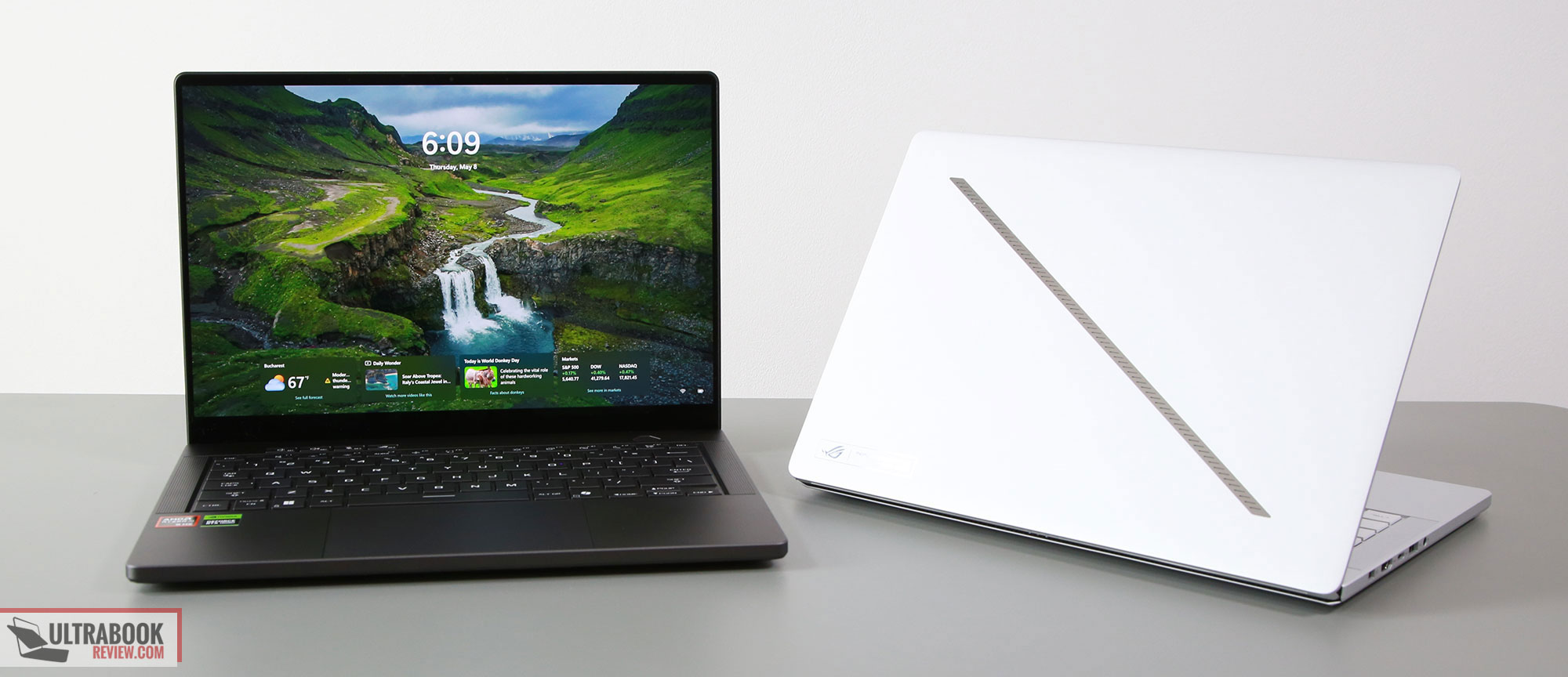
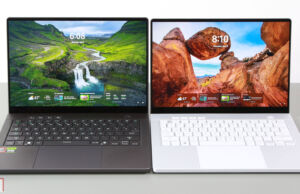
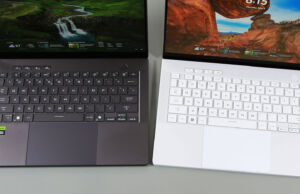
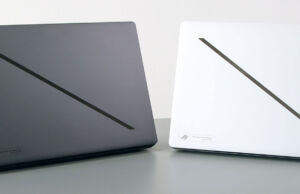
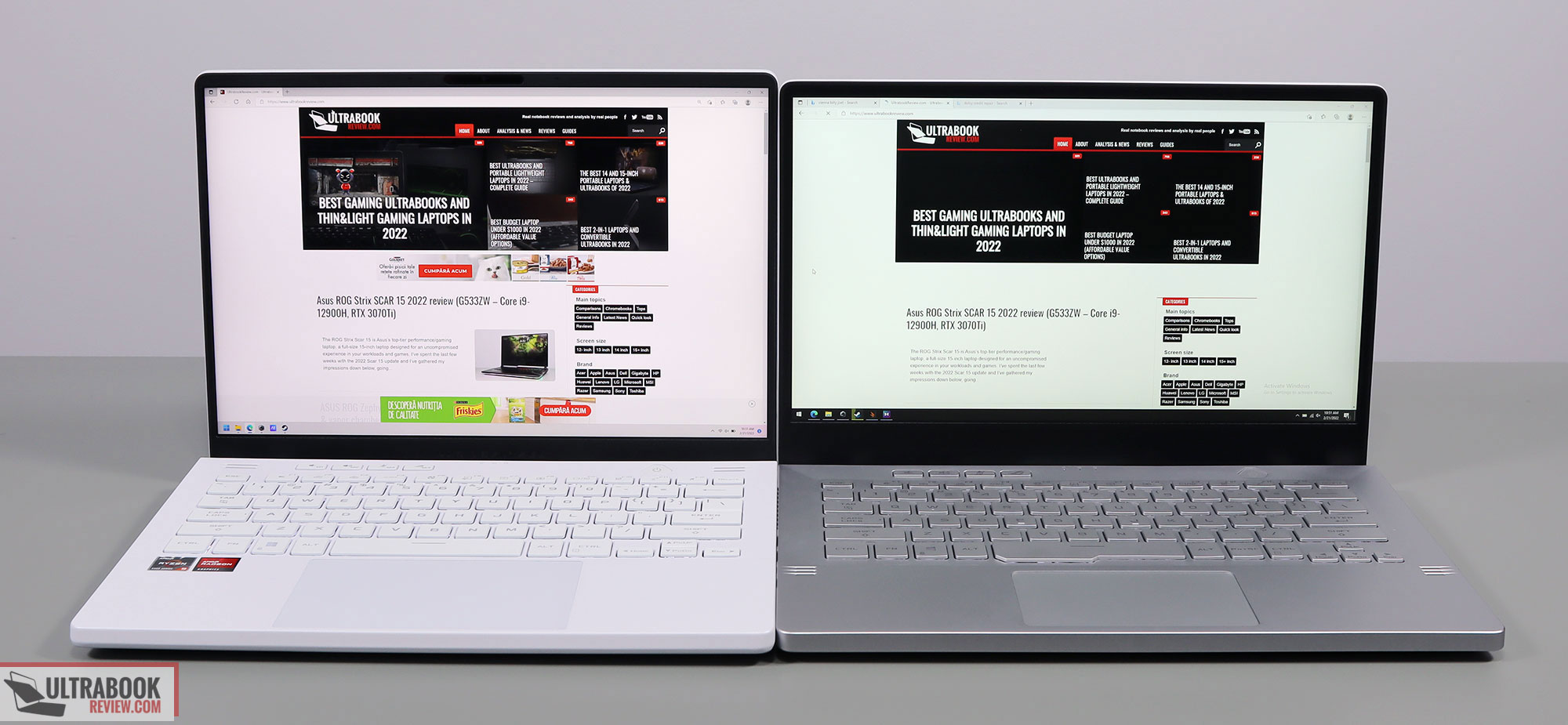
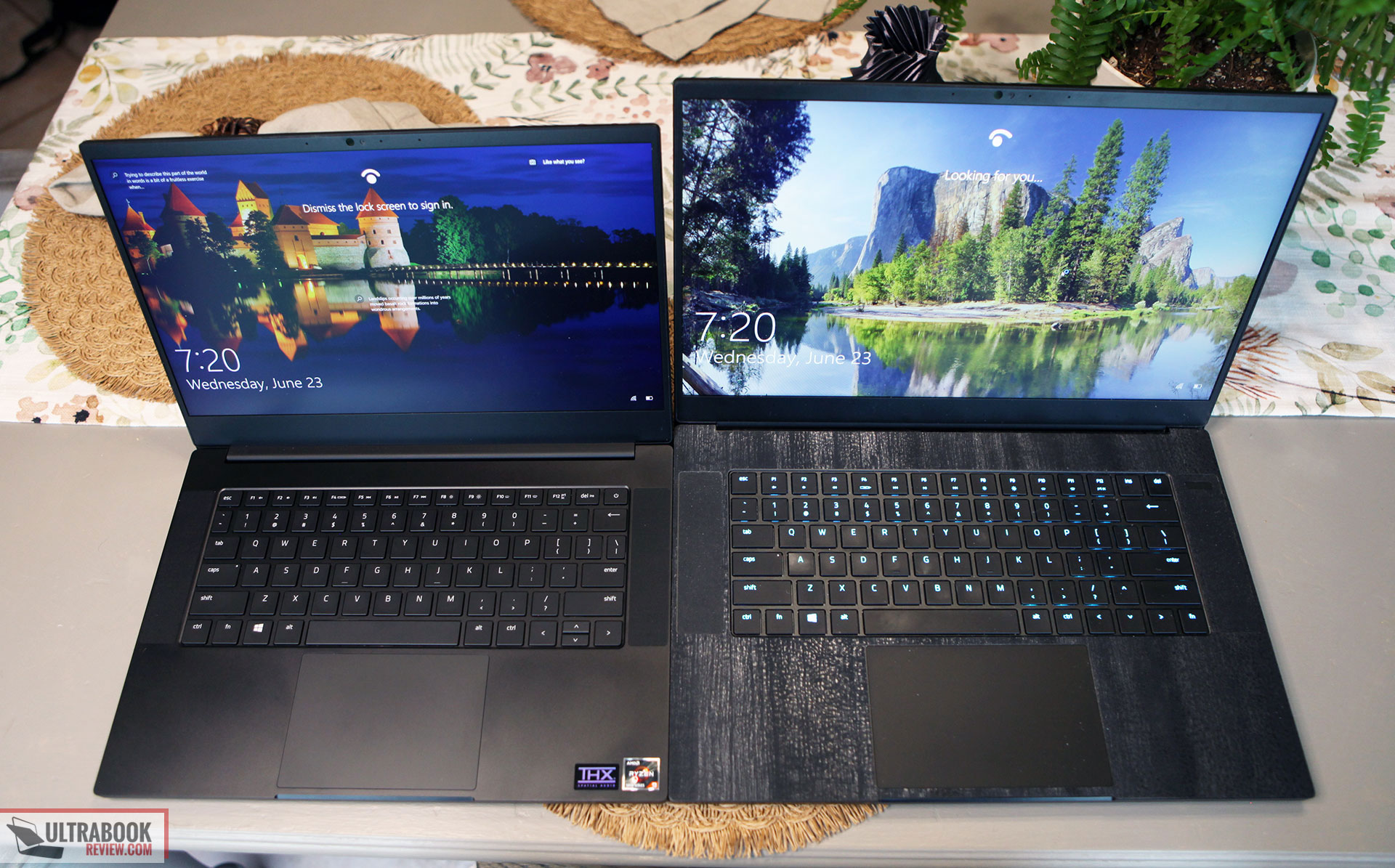
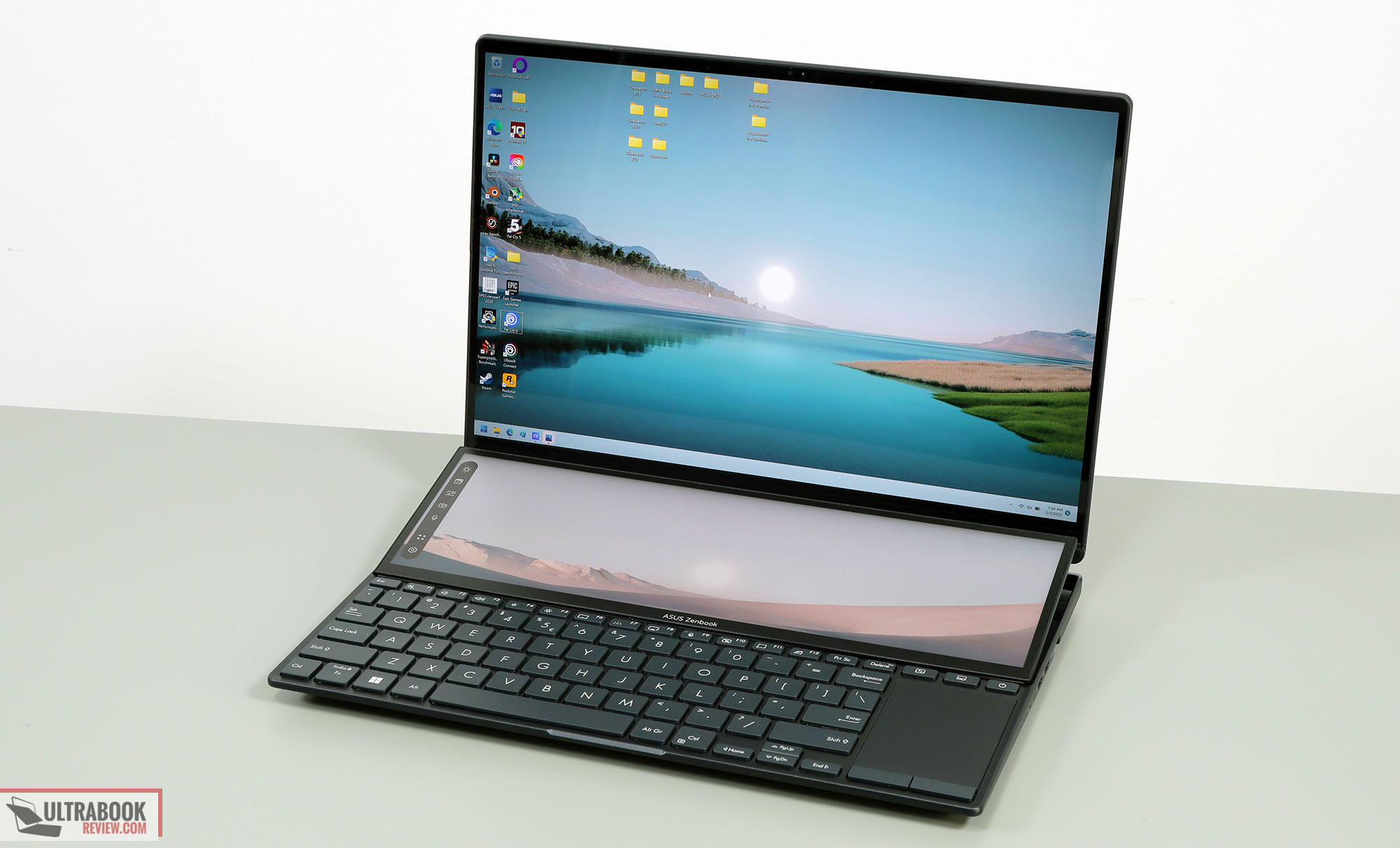
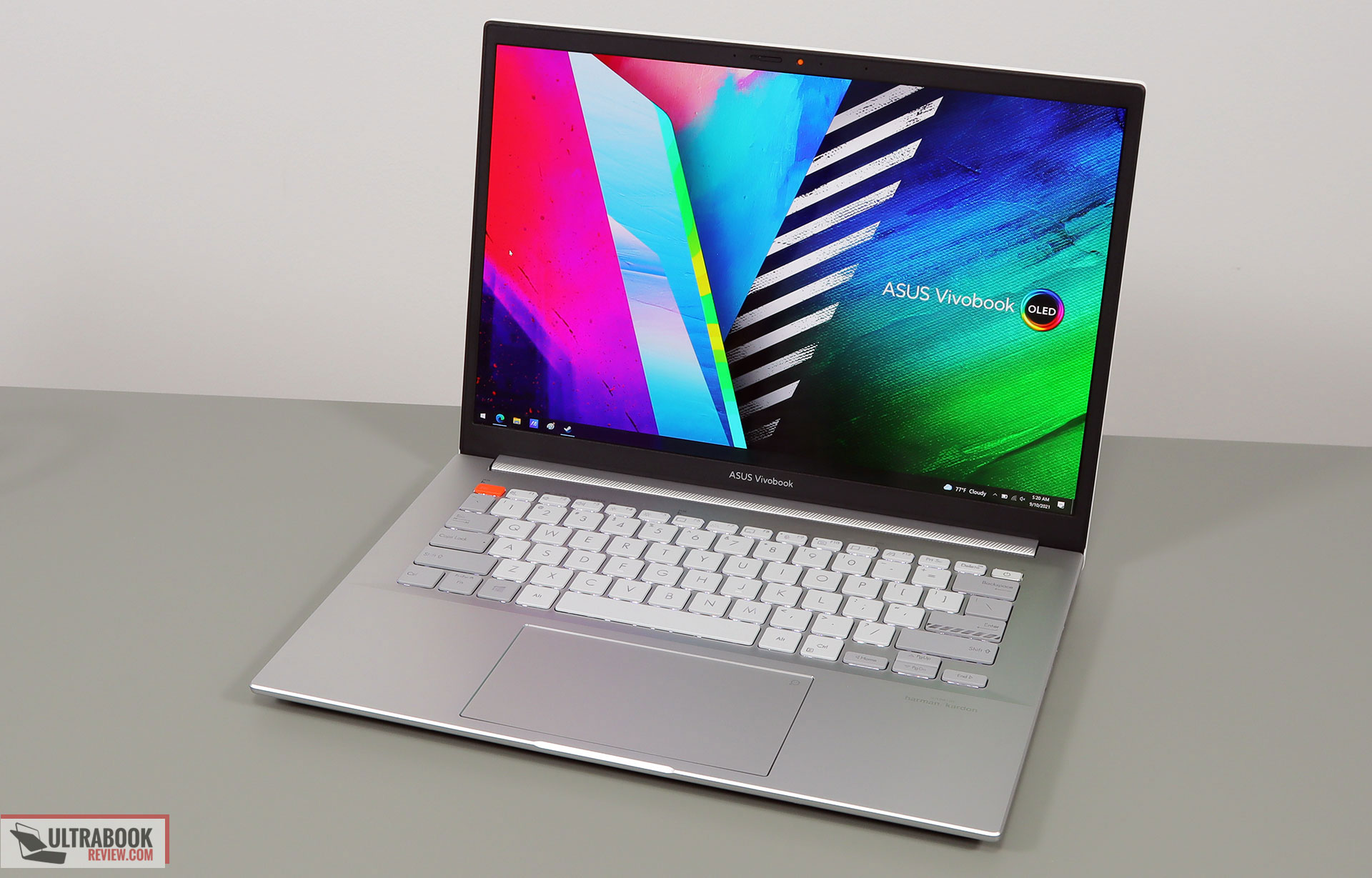
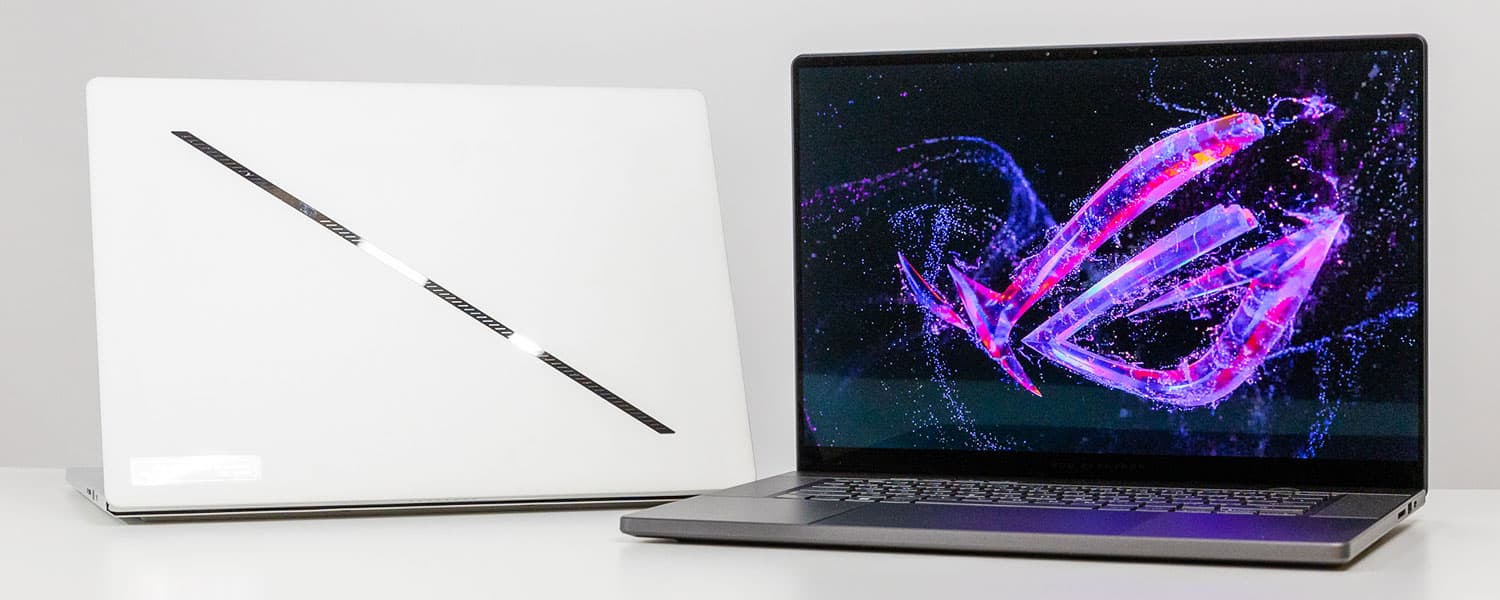

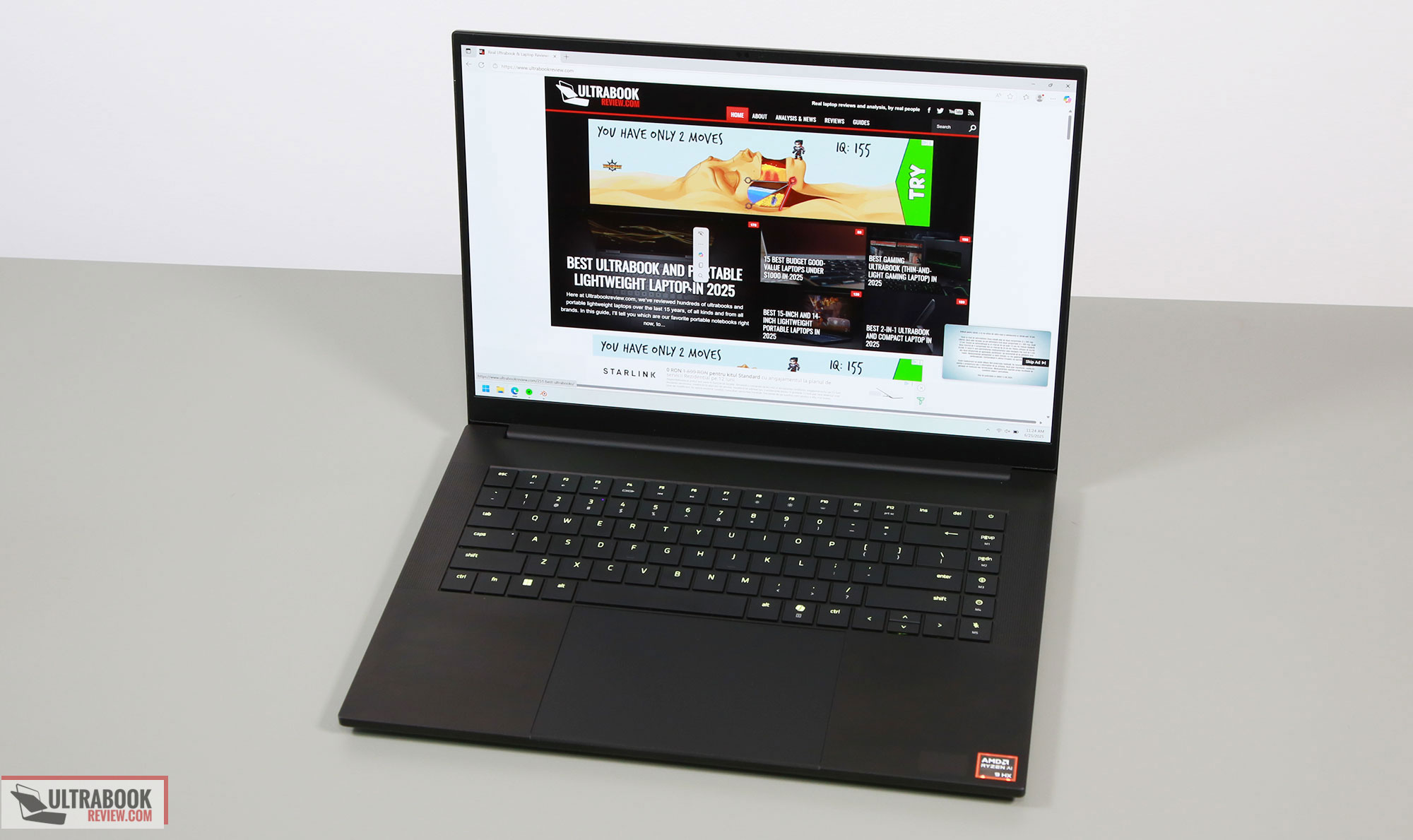

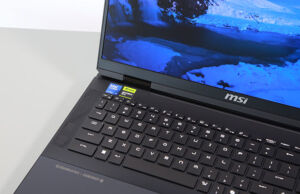
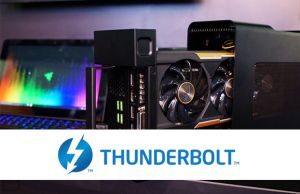
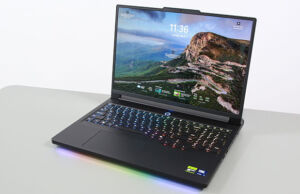

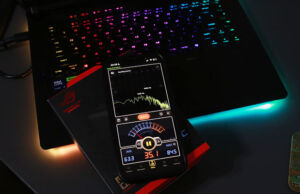
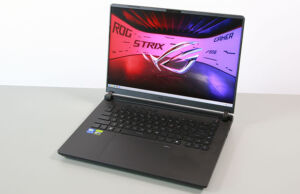
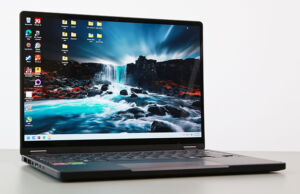



Randy
January 29, 2022 at 6:39 pm
I am really confused with all the specs in the market.
I'm looking for a laptop that's best balanced for daily use (graphic design, video editing) and gaming (dota 2, PUBG) that will last at least 10-15 years. What would u recommend?
The one that so fast, no lag, no problem, reliable and will last long.
I tried dota 2 in macbook air m1, so laggy can't play it there.
jack
February 11, 2022 at 5:12 pm
can you add a dark mode? all this white hurting my eyes
Andrei Girbea
February 14, 2022 at 1:25 pm
Thanks for the suggestion, It's on the to-do list
Evan Charles
March 1, 2022 at 7:36 am
I have been looking for a laptop that can handle the latest games on high settings. I’ve tried out Dell, Acer, and Alienware before but I was not satisfied with their performance in gaming. Now that I am done reading your article, my mind is clear and I will be buying an Asus ROG Zephyrus M1 soon.
Dave
June 15, 2022 at 2:40 pm
Hey guys,
Are you planning to review the 2022 Refresh of the 14" Acer Predator Triton 300 SE?
When it first released last year it almost ticked all my boxes, but then reviews came out and many reviewers were disappointed in the performance of the 4 core 11th Gen Intel H Series.
With the bump to 16:10 screen, 76Wh (from 60) and an Alder Lake processor with P and E cores, I really hope this can be a home run because I like the styling a lot more than the Zephyrus G14 and for me 14" is the sweet spot for a laptop.
I'm sure if you are given a review unit from Acer they would want you to test the best SKU possible, but it would also be great to see the i5 or i7 SKU, I don't need the power of an i9 and I'm sure they would have better battery life.
Lastly, and this is not specific to that laptop, but it would be great if you could add a "battery life on low requirement games" section to your reviews. I don't expect to play SotTR on Ultra with RayTracing for long unplugged, but could I get 3 hours of Civ V on medium settings, using integrated instead of discrete graphics (maybe via MUX Switch) on a plane journey (with Wifi etc off)? No one really tries that in their reviews but I think it would be really helpful.
Thanks for your great site
Dave
Andrei Girbea
June 15, 2022 at 3:08 pm
hopefully, yes. I don't have a review unit yet, though.
Battery life isn't affected much by the settings. I will run some tests with various resolutions and fps cap rates, as I expect that a 30 fps limit to have a positive impact. I'll have a dedicated article if I can to any conclusions that are worth sharing.
Dave
June 16, 2022 at 2:25 pm
That's awesome, can't wait to read your review.
My 2010 Elitebook 8440p is on its last legs. 3rd battery (which lasts about 180 seconds unplugged) but I'm so picky that if I want to spend that much money on a laptop it's gotta be damn near perfect!
Daithi
October 27, 2022 at 2:23 pm
Hi Andrei, I noticed this guide just got updated.
I'm looking for a new laptop (hopefully will find a decent Black Friday discount).
Is there any chance you will have a full review of either the 2022 Predator Triton 300 SE (12700H, 3060 or the Lenovo Slim 7 Pro X (6800 HS, 3050)? Both hit that 14" 16:10 sweet spot for me.
I'm looking for some very medium gaming performance – 99% of my gaming is on PS5 but I'd like to be able to play MS exclusives with the Bethesda and possible Activision acquisitions as well as games better suited to mouse/kb input such as Sim City/Kerbal Space Program etc.
Andrei Girbea
October 27, 2022 at 2:34 pm
Hi. I don't have those. Will have a review of the Yoga Pro 14 X with the Intel specs
daithi
October 27, 2022 at 5:35 pm
Is that the Slim 7i Pro X? I believe it's the same other than the proccesor and TB4 support
Andrei Girbea
October 27, 2022 at 6:41 pm
yes. Btw, why isn't the ROG G14 on your list as well?
daithi
November 1, 2022 at 2:16 pm
> yes. Btw, why isn't the ROG G14 on your list as well?
Looking forward to it!
The G14 is on my list but I prefer the styling of the Predator 300 SE or Slim 7(i) Pro X over something that screams "GAMER". G14 also comes with AMD GPU. Maybe I'm buying into the Marketing a little too much but DLSS just seems like something that will give a machine a bit more performance lifespan – eg running a AAA game in 2028 rendering at 720p and DLSS upscaling to 1080p/4k for my screen.
That being said if the best Black Friday/Cyber Monday deal is for a G14 then that's what I will be buying.
The Complainer.
December 21, 2022 at 8:59 pm
There really needs to be a section addressing/ranking the best for gaming on battery. (Both in battery runtimes and performance unplugged vs plugged difference)
Otherwise, what's the point of buying a gaming thin and light ultrabook, might aswell get just get a desktop replacement.
Julien
April 25, 2023 at 10:28 am
Hello Andrei,
Any chance you’ll evaluate the 2023 Gigabyte Aero 16 ?
It’s 4K 1.9Kg (specs updated by Gigabyte) and pretty unique in the price segment. I was hesitating between that and a UHD Razer Blade 16 but the weight difference is significant.
Having very bad experience with Dell XPS 9360 hardware quality (keyboard wearing in 6 month down to the PCB), and constant crashes on each driver updates, I’m looking for a high quality 4K light laptop mostly for coding.
Best regards.
Andrei Girbea
April 25, 2023 at 10:34 am
It's not in the works. I have very limited access to Gigabyte review units, and buying one just for tests isn't financially feasible for us, since the interest for the product is not enough to justify the expense.
I'll ask Gigabyte for a sample, but I doubt they'll provide one.
Otherwise, I'm a fan of their implementations if you're ok with their design and their keyboards. Plus, keep in mind the Aeros are not as powerful as some of the other options (such as the Blade 16 or others), as the are more compact and lower-power designs.